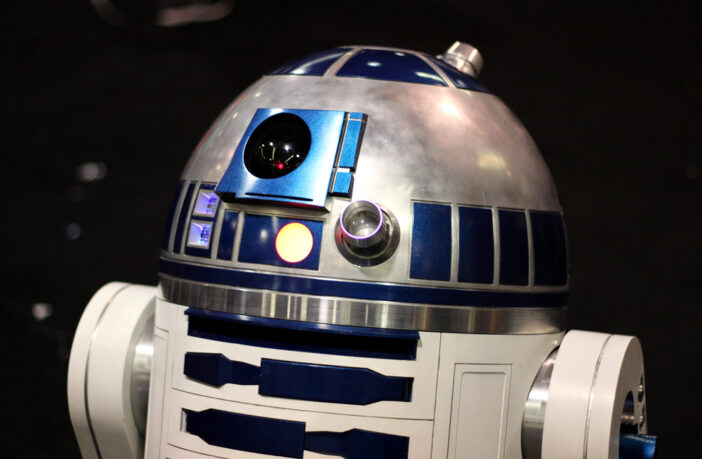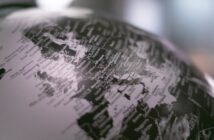- New research from The Open University aims to promote better sustainability among makers of the film industry’s props, costume and the replica market
- Academics have developed a calculator tool so people in the industry can make carbon-emission comparisons about which materials and methods are the most sustainable to use
- Case study showed a Star Wars metal R2D2 used 686kg of CO2 in the making but a CGI one dwarfed that with 4,248kg of CO2
- The research has the backing of BAFTA Albert – created in 2011 in a bid to encourage the TV and film production industry to reduce waste and its carbon footprint
An Open University research academic with a passion for Star Wars is working with film industry partners to promote more sustainability in the creation of props and costumes in the sector.
Dr Rebecca Harrison is a senior lecturer in film and media at the OU and is the brains and project lead behind research known at The Environmental Impact of Filmmaking (EIF).
Alongside research associate and environmental scientist Dr Siti Syuhaida Mohamed Yunus, Dr Harrison recently unveiled their research to professionals in the film industry at the British Film Institute, using case studies based on four well-known Star Wars props and costumes to demonstrate her work.
Under the spotlight are fans’ favourites: lightsabers, R2-D2 (AKA Artoo-Detoo) and the spectacular red costume of the Padmé Amidala queen character, played by Natalie Portman.
The team’s research followed the life cycles of props and costumes from the extraction of raw materials through manufacturing processes, to disposal or repurposing.
Dr Harrison said:
“We are taking well-known objects that have been hugely influential on design and making in the screen industries – including items that people maybe have replicas of at home, such as lightsabers – and encouraging practitioners, researchers and audiences to think about them in a different way.
“Specifically, we’re asking what the carbon footprints of props and costumes are so that we can support the industry in making greener choices.”
The team’s carbon-footprint case study involving production of a metal R2D2 costume compared with a CGI version of the droid, found the costume involved just 686 kg of CO2 to make it but the CGI version’s was 4,248.15 kg of CO2.
Dr Harrison said while the gap between results was much wider than she anticipated, it points to a problem that many people in the industry are concerned about.
“Unfortunately, digital design and animation don’t offer easy solutions to environmental problems. There’s a lot of work to do in this area, and studios will need to adapt their digital practices to make them more eco-friendly,” she said.
And she showed how the UK’s film industry could help improve their sustainability practices with the creation of the EIF project’s emerging tools.
These include the calculator that compares the carbon emissions of practical and digital props, so that people in the industry can make better informed decisions about which materials and methods are the most sustainable to use. The calculator appears with other resources on a dedicated website www.eifproject.com
Ever since production began in 1976 for A New Hope (1977), the Star Wars franchise has produced a vast array of props and costumes that appear across films, television shows, video games, comics, theme parks, novels, and more besides. Many items are also reproduced by toy manufacturers and sold around the world.
Dr Harrison said:
“What we are aiming to do is get people thinking about the differences of physically making something – whether you are making it out of plastic, wood or metal, or whether you are making it with CGI. This is because one of the big myths about digital is that it’s greener.
“This is because people are not necessarily seeing the process and not thinking about all the materials that go into something that is computer-generated: the energy it uses, the servers behind the scenes storing the information.
“This is one of the things that we’ve factored into our first calculator tool, so that people can see that if they made something out of metal it might have a lower carbon footprint than creating and animating the same object on a computer. We are hoping to get people into a different mindset with this.”
The Environmental Impact of Filmmaking research project forms part of the OU’s Open Societal Challenges Programme, which aims to tackle some of the most important societal challenges of our time through impact-driven research. The Programme’s focus on the themes of Tackling Inequalities, Living Well and Sustainability align well with the OU’s mission to be open to people, places, methods and ideas.
The Programme’s aim is to apply excellent research by OU academics to some of the most pressing challenges facing people across the UK and worldwide to transform lives and drive societal change.
You can watch a video of Dr Harrison being interviewed about her research here.
Picture: Logan Bush for Shutterstock



